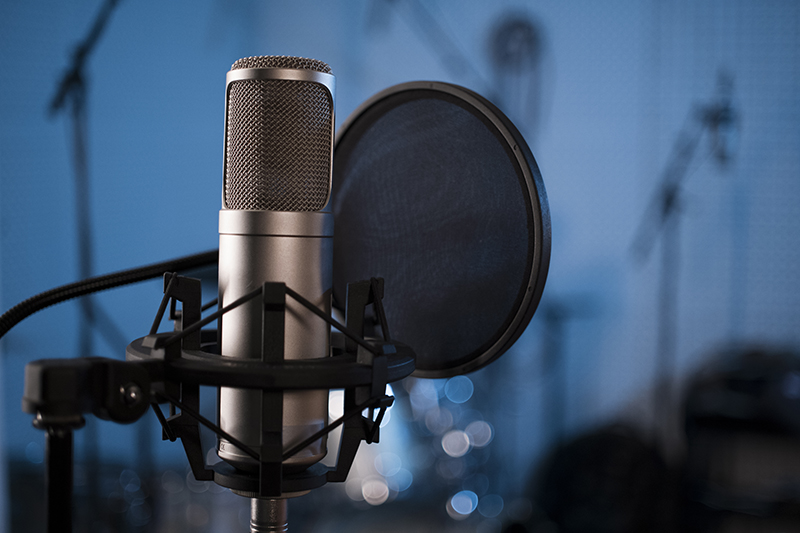The popularity of podcasts has grown significantly over the years, despite the fact that people are naturally drawn to visual content. One key reason for this is the convenience that this format offers. Podcasts are easily accessible on smartphones and other devices and can be consumed on-the-go, fitting into busy lifestyles during commutes, workouts, or chores. Podcast transcription services help document the content in standardized text format, enhancing content visibility and accessibility. As a podcast creator, you also need to analyze your podcast statistics to understand your audience, improve content, and make informed decisions about your show to optimize monetization strategies.
A recent report from Demand Sage indicates that, there were 464.7 million podcast listeners globally as of 2023. It is expected that this number will reach 504.9 million by 2024 (demandsage.com). The report also notes that the podcast industry market size is $23.56 billion and there are over 5 million podcasts globally with over 70 million episodes between them. So the podcast scene is booming. Utilizing analytics can help podcasters to take full advantage of the current popularity of podcasting.
Ten Reasons to Measure Podcast Analytics
Podcast analytics refer to the collection, measurement, and analysis of data related to podcast episodes and their listeners. This data provides podcast creators and producers with valuable insights into their audience, content effectiveness, and overall podcast success.
Here are 10 reasons to measure podcast analytics:
- Track growth: Monitor the expansion of your listener base, streaming, downloads, and subscriptions.
- Refine content: Make necessary adjustments to content or podcast schedule based on listener performance, reviews, and engagement.
- Create engaging content: Produce more of the content that resonates positively with your audience.
- Improve quality: Address quality issues to capture a larger audience, as low quality deters potential listeners.
- Targeted Marketing: Utilize listener demographic, device, and location data for precise ad targeting and podcast monetization.
- Attract sponsors: Present real data about your listeners to entice sponsors and podcast networks.
- Live show selection: Identify optimal locations for potential live shows to engage your audience.
- Value-added content: Explore new content formats like podcast transcripts (beneficial for the hard of hearing) and video podcasts, facilitated by tools like Riverside.
- Leverage reviews: Incorporate positive listener reviews into your marketing campaigns.
- Maximize revenue: Analyze and optimize your revenue generation strategies using analytics insights.
Podcast Analytics: What Should You Measure?
Podcast analytics enables creators to use data-driven insights to assess performance, grow their audience, and generate revenue through sponsorships and advertising. Measuring the following metrics can help you understand the popularity of your podcast:
- Downloads/streams and listener demographics: Track the number of times an episode is downloaded or streamed. Take a look at which episodes are downloaded the most, and analyze the topics, guests, or episode format that made these episodes a success. “Total listens” represent the count each time a listener presses play. Thus, a high listen count can stem from repeat listens or individuals consuming episodes in multiple sessions, without indicating a direct audience growth. Understanding the age, gender, interests, and location of your audience for content customization and targeting potential sponsors.
However, it is essential to note that subscriptions and downloads do not guarantee actual listeners. Instead, focus on identifying recurring listener patterns, adapt content when episodes underperform, and prioritize creating more of the content that resonates positively with your audience. Also, as with any dataset, exercise caution when dealing with outliers and sudden extreme shifts in your statistics. For instance, there was a recent incident where data inflation affected podcast download rates on Apple Watches, causing notably inflated numbers.
- Unique listeners and subscribers: The concept of “Unique Listeners” in podcast analytics represents the count of individual people who played an episode, excluding multiple plays by the same person. This metric offers an accurate measure of audience engagement, distinct from the total play button presses. Comparing the ratio of “Unique Listeners” to “Total Listens” per episode helps understand audience behavior, such as repeated listens or adjustments to listening habits when there’s a deviation from the typical format.
- Retention and drop-off rate: Metrics like listen duration, episode completion rate, and skip rates provide insights into episode effectiveness. Measuring how many listeners continue engaging with your podcast over time indicates content quality. Also analyze listener drop-off rate at the show or episode level. Measure play counts, audience retention by episode segment, device breakdowns, and more. Monitoring the average listening time for each episode offers a more detailed perspective and allows you to closely examine the factors leading to listener drop-offs. By identifying patterns in the average listening time, and consequently, your drop-off rate, you’ll gain insights into the content impacting your engagement negatively.
For instance, if you observe a consistent drop-off every time a specific segment begins, it serves as an indication to reconsider that segment. Alternatively, if most listeners drop off right at the start of the episode, it might be time to reassess your sound quality, editing, or any other elements that could be contributing to a below average initial impression.
- Geographic distribution: Knowing where your listeners are located helps with regional content customization. The geographical statistics of your podcast reflect the global locations of your listeners. If your podcast is advertising a product, your primary goal would be to minimize unnecessary spending and direct my budget towards potential customers capable of purchasing my product. For instance, if your delivery services are limited to the United States, you should strategically avoid advertising on podcasts primarily followed by a European audience.
So, this geographic distribution holds significant importance, especially when exploring opportunities for monetization. If you’re considering hosting live events, it’s practical to target cities where the majority of your listeners reside. When approaching local brands for sponsorship opportunities, leverage the data to showcase the significant number of listeners from their target cities, highlighting the value you bring to their target audience.
- User agents: Identifying the devices or platforms listeners use to access your podcast, important for optimization. According to a 2022 report from Edison Research, a significant 73% of podcast listeners in the US prefer using smartphones for podcast consumption. Only 13% opt for computers or laptops, which likely represents the group accessing podcasts through web browsers. Podcast data indicates that listeners using mobile apps tend to have higher completion rates for entire podcast episodes compared to those using web browsers (blog.pacific-content.com).
- Monetization: Analytics attract sponsors by demonstrating audience size, engagement, and demographics. Podcast analytics enable creators to assess performance, grow their audience, and generate revenue through sponsorships and advertising.
Unlocking Actionable Insights from Podcast Transcription
Deriving functional insights from podcast transcripts involves a combination of careful analysis and strategic thinking. Here’s how transcripts can help you derive crucial insights about your podcast:
- Transcript preparation: Use transcription software or reach out to a digital transcription company to obtain accurate, structured transcripts of your podcast episodes.
- Segmentation: Divide the transcripts into manageable sections based on topics or segments for focused analysis.
- Keyword analysis: Identify recurring keywords or phrases to understand popular themes among the audience.
- Sentiment analysis: Analyze the content to understand sentiment and gauge emotional cues and resonance of content.
- Listener engagement: Study engagement levels throughout the podcast to identify areas of high interest.
- Identify listener questions: Address questions or concerns expressed by listeners in future episodes.
- Guest and audience reactions: Study responses to specific guests or topics to understand what appeals to listeners.
- Compare episodes: Identify patterns in engagement and content preferences across different episodes.
- Feedback Loop: Use insights for informed decisions on future content, format, or guest selection.
- Content repurposing: Repurpose insights into blog posts, social media content, or expanded podcast episodes.
You can leverage affordable transcription services to utilize podcast analytics, expand your listener base, and increase revenue opportunities. Regularly analyze your transcripts to stay updated on changing trends and listener preferences, ensuring continued relevance to the audience.
Transform your audio into text with our efficient and accurate digital transcription services!




